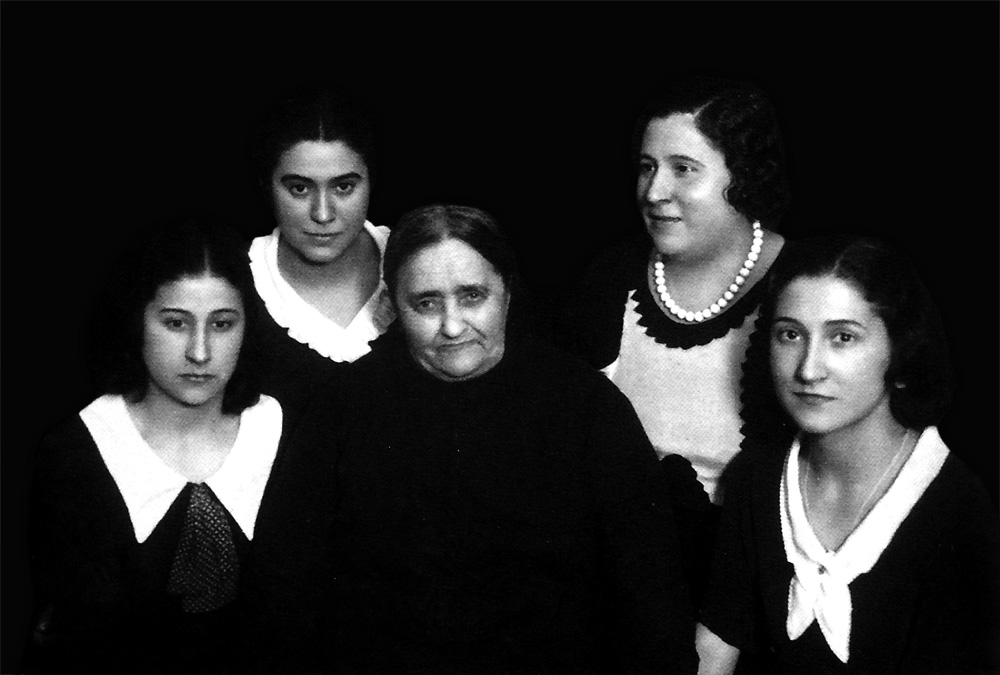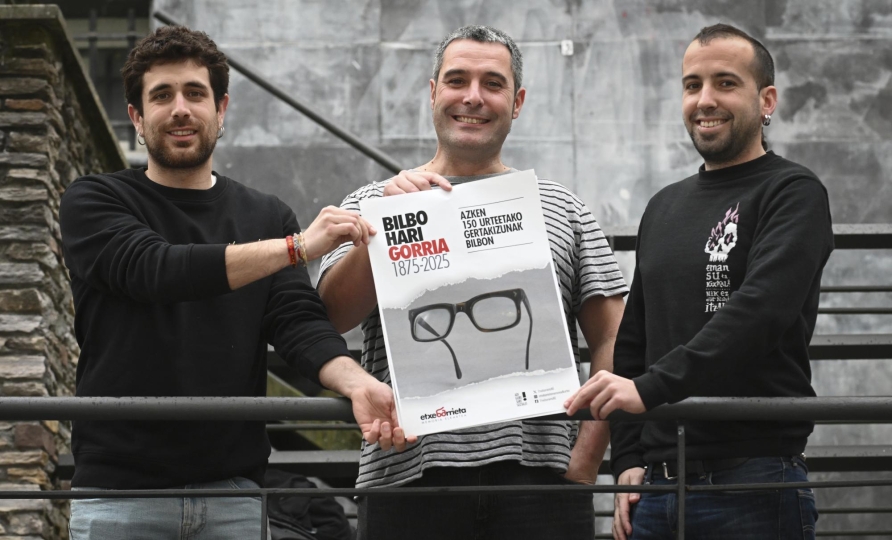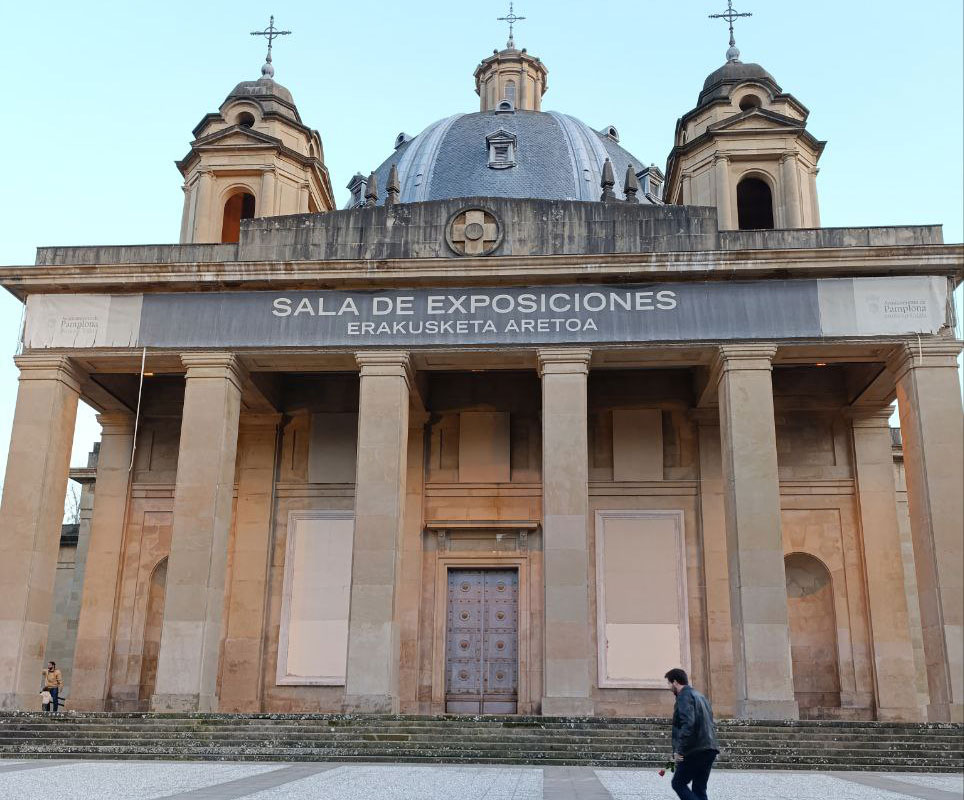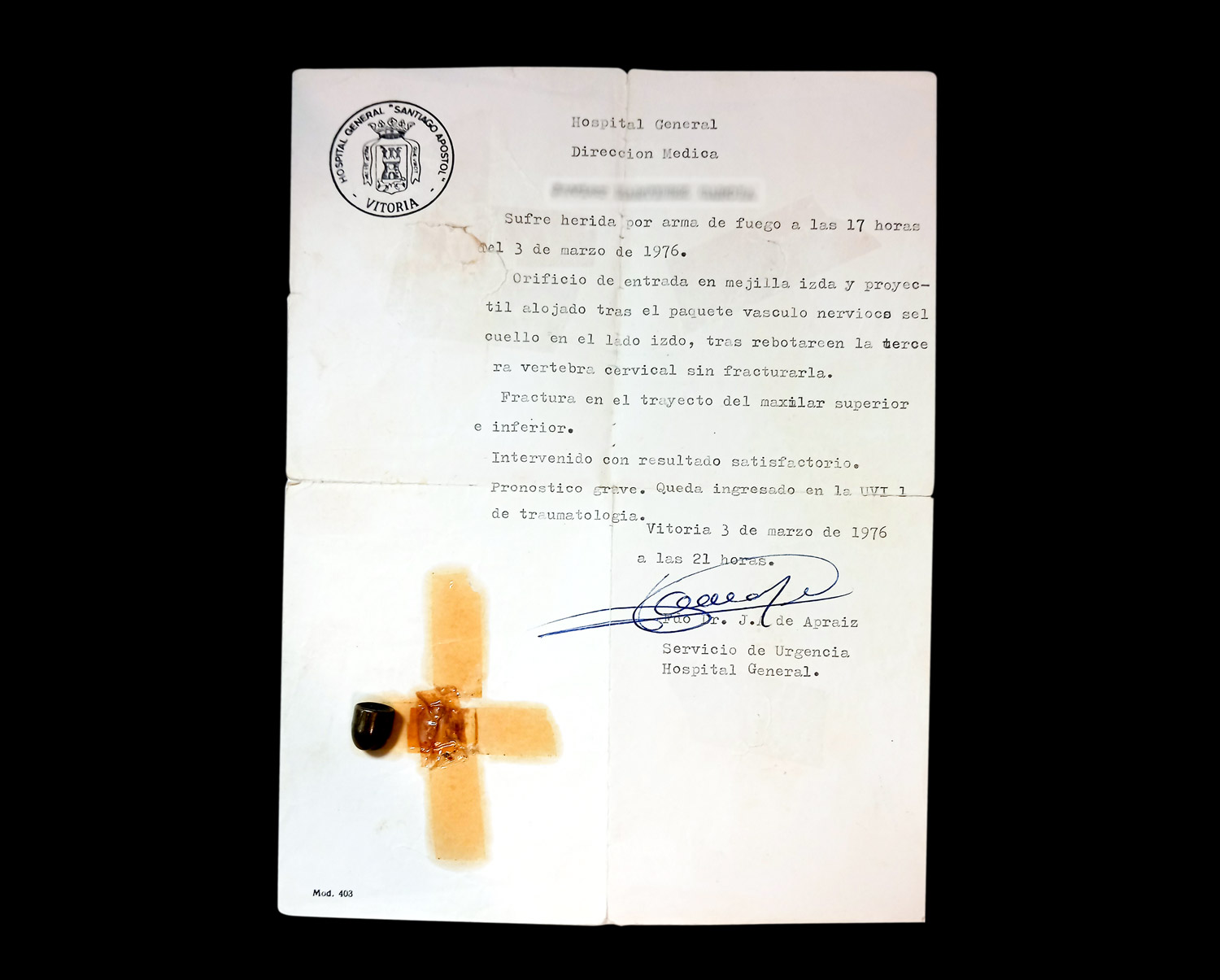Voices buried on the edge of the walls
- We knew something about the tragedy that took place inside the makeshift jail on Mt. Ezkaba, not so much about the struggle that women's groups brought outside those walls. The Pamplona researcher, Amaia Kowasch, has now given voice and face to the protagonists of those shadow networks that were essential for the survival of the Basque prisoners.

On April 11, 1938, a Francoist military police unexpectedly broke into Catachú, a restaurant in the narrow Lindatxikia street, in the Casco Viejo de Pamplona, for a raid. Being a Holy Monday, the inn was crowded with people after eating, and dozens of people were arrested, including their owners: Bibiana Rodríguez and Isidoro Iturralde; they also took some of their children to a municipal warehouse or “kennel” enabled as curator at the back of the bullring.
The attendees included Rufina and María Iturralde Rodríguez and other members of Emakume Abertzale Batza. Many of them were arrested, tortured and imprisoned, accused of helping the Republican prisoners in San Cristobal, where they were arrested and detained.
However, they were not the only ones trapped in Catachú. During these years of war, dozens of women were organized into groups, family members or strangers, to bring food and clothing to the fortress of Ezkaba and to the provincial prison of Pamplona, to make visits and offer all kinds of help to the prisoners. The social worker and sexologist Amaia Kowasch Velasco (Pamplona, 1990) has published the book Tejiendo from the hand of the Government of Navarra, with the aim of collecting the history of all of them: “These women performed care tasks, but what should be highlighted is that it was a collective, organized and clandestine work from 1936,” he explains.
Those other empty bottles from San Cristobal
Since the Fort of St. Kitts was imprisoned from 1934, it was a dark place of experimentation for condemnation and revenge. Since the fall of 1936, more than 2,000 people accumulated in sub-human conditions. It is known to us because in May 1938, 798 prisoners tried to escape: they were scientifically murdered as hunting pieces. So many others died of disease and hunger in the dungeons. Proof of this is the so-called “bottle graveyard”, in which the chaplain deposited a glass bottle next to the buried corpses, with the name of the deceased and the cause of his written death.
We are gradually getting to know what the prisoners in San Cristobal have suffered, thanks to the historical and archaeological research of recent years. But it is not enough for all that has happened to be known, because there are many other empty bottles hidden beneath the earth. As Kowasch has explained to us, the research so far has been “androcentric”, has focused on the history of men and has hardly been written about the participation of women in the daily fight against the death of St. Kitts. Why?
Amaia Kowasch:
“The repression suffered by women during the civil war and the dictatorship was very different and silence and fear are still present”
“The repression suffered by women during the civil war and the dictatorship was very different and silence and fear continue to prevail,” explains the researcher. Franco tried to eradicate the achievements in favor of women's rights in the early twentieth century, leaving them in a marginal account. In addition, it harshly suppressed those who deviated from such an idea. However, they faced the regime from the outset: "In this political context, some escaped, but others had to stay. In this latter group, the only real option was to organize and defend what is democratically decided, the republic.”
The history of women in solidarity in San Cristobal begins in 1934. Networks were set up to support left-wing prisoners imprisoned as a result of the revolution of October that year. Driven by ideology, socialist, communist and anarchist groups rose to Mt. Ezkaba to see prisoners, including under International Red Aid. These kinds of solidarity movements influenced the daily life of Pamplona and also made political demands in favor of amnesty.
1934: time to grind
However, with the fascist uprising, many of these women were arrested and tortured for their presence in these networks. Basilisa Blázquez was born in Funes, with leftist ideas and her daughter María Luisa remembers how her mother and other women met at the House of the People of Pamplona and decided by lot to help which prisoner of San Cristobal, they went up once a week to visit tobacco and food singing jotas:
“….And in the fort of San Cristobal
the reaction came to us...”
But little Maria Luisa, who was only six years old when the war broke out, was left with another figure stuck in her head: her mother, who had cut her hair in her living room, had drunk castor oil and cried with her, there were two requetés. Basilisa was imprisoned for a year in the Pamplona prison for women, according to her file for the passage of fugitives across the border through International Red Aid. Subsequently, he was deported and eventually the family moved to the village of Azagra, where he was admitted to prison.
.jpg)
The fate of Guadalupe Ezkurra, Josefina Guerendain, Juana Astondoa and many others was humiliation and revenge. The latter told Kowasch that on the way to Ezkaba the fear passed and hid the food between the clothes to enter the prison.
To complete the book Tejiendo redes, the author has five years of work behind him, sometimes he has been able to gather direct testimonies – in total it has been with 70 women – like the one left by Juana Astondoa before his death; on other occasions his heirs have been testified: “In many cases, they have had no news until their grandmother, aunt or mother gives them the last sigh,” says the researcher. But those who are aware of what has happened seek above all the recognition of these women, to keep the memory alive and to recover the truth.”
Emakume Abertzale Batza
The prisoners of the 1934 revolution took to the streets with amnesty after the victory of the Popular Front in 1936, but within a few months, the humble cells that had been pierced in Ezcaba were again filled with the coup received from the Navarre capital by the great conspirator of the uprising, Emilio Mola.
During the war, the Union of Patriotic Women (AAB) took the lead in helping prisoners, but in this case, only the relationship with the Basque battalions. Kowasch explains why: “What I’ve found in these years of research is that, but for one concrete reason: Because Petra Irigoien, a member of the UTE, lives at 107 years old. Surely there would also be many networks between socialists, communists and anarchists.”
Paradoxical, the prison system created to maintain the regime called into question the social order in Pamplona.
Petra Irigoien and his three sisters were part of a Russian-speaking nationalist family, and in the years of the war they helped countless prisoners and relatives. Through it we know that many more women from Emakume Abertzale Batza became involved in this network: Magdalena, Amalia and María Camino Vigura, Nati and Dolores Ziga, Felisa and Marvels Redin... Many of them were arrested at Operation Catachú in 1938.
The rules of the San Cristobal fort were very rigid, the prisoners used to be isolated and the visits consisted of “oral communications” put in line: a brief 15-minute conversation with the official in view. They could not talk about political and social issues, or about prison conditions. In addition, visitors had to be relatives, so many women from Pamplona were liking and pretending to be sister-in-law, which could lead to harsh punishment.
Immediately after the outbreak of the war, women began to organize themselves in small Pamplona, the epicenter of the revolt, as in Anti-Fascist Women. Where did the audacity to risk such a danger to the monster, which opened death, come from? “Men were not the only brave,” the researcher said. In all wars there are parallel wars that are not seen, and on many occasions those who practise them, in this case women, are more courageous than on the battlefield.”
This is precisely one of the keys to Kowasch’s work, beyond mere assistance, which showed that women played an important role in politics and in social matters. For the researcher, in addition to the role played by those who collaborated in San Cristobal, there are many other behaviors that we do not yet know, “like those that had to take their families forward or those that were in the jail of women from Pamplona. Today, they are neither investigated nor recognized.”

II. In the Republic he was convicted of the coup d'état in 1936 for aiding the San Cristobal prisoners.
From Azagra to Pamplona, 101 kilometers
The Franco apparatus designed penitentiary policy as a punitive institution only to reach power, and to achieve this goal, the most effective method was, as it is now, the removal of prisoners. Forensic Francisco Etxeberria has recalled in the prologue of the book Tejiendo redes what the poet Fernando Macarro Castillo Marcos Ana said in a documentary, who spent 23 years in jail: the weak point of the prisoners will always be at home. “When a prisoner seems to be walking in jail,” says Etxeberria, most of the time it’s because of a family problem.”
The repressive prison system behaves with this inability of the prisoner, who is many kilometres away, to dominate the dissident. But it also happens the other way around, the relatives have to go through a lot of suffering in a distant place that is unknown to them. This was the case with the relatives of San Cristobal prisoners throughout the Spanish State. Between 1934 and 1945, only 130 of the 4,796 people locked up in the fort were Navarre; most of them had been transferred from Bizkaia, Madrid, Valladolid, Segovia or Asturias.
On the contrary, the prisoners’ relatives also created networks between them to collect food or clothing and take it once every two weeks to the fortress, after long bus, train or walking trips, as happened in Segovia, Valladolid or... Azagra. About 30 prisoners were in San Cristobal, a leftist and secular town of the Ribera, 101 kilometres from Pamplona. The daughter of one of them, Pilar Martínez, recalls that an aunt who lived in the capital sent the clothes of the prisoners of Azagra on the bus of La Tudelana and the women returned them washed.
Many other women, however, could not stay in their homeland because they had been robbed of their property or because they were not given a job. In Pamplona at least they would have the opportunity to see their family member... Many of them remained in the city, but they did not go unnoticed and experienced great difficulties. In any case, a lot of nonsense and nonsense people helped them, gave them food or offered them a job.

This daily life created close relationships, to the point of questioning social control. In 1944, the Vice-President of the Provincial Council of Navarre sent a letter to the Minister of Defense requesting the closure of the prison. In his opinion, with the family members who remained in the city at the time of release, “...producing a morbid sediment, a possibly adapted core...”. Paradoxically, the prison system created to maintain the regime called into question the social order.
The whims of an anonymous struggle
In the testimonies of solidarity women who accompanied the prisoners in San Cristobal, they do not fail to mention the militants who stood out in the pre-war period. Not only prominent politicians such as Clara Campoamor or Victoria Kent, but also socialist Navarre MEP Julia Álvarez or Julia Fernández, creator of the first ikastola of Pamplona and the Abertzales Women's Board closest to Euskal Herria.
For Amaia Kowasch, it is important that women get the referentiality when making a forgotten story: “I am and were known, they have not had the necessary prominence in history.”
However, the fact that for 40 years they have been relegated to the private sphere of the family model imposed by the Franco continues to generate fear of exclusion: “I’ve perceived that fear when making the interviews, and I’ve seen it especially when publishing the book: many have chosen to remain anonymous.” So far no one has recognized and made known their work, so they have downplayed and silenced these stories from the edge of the walls of San Cristobal: “Little by little, after many studies, that idea is changing and women realize that their participation was fundamental.”
Kirola eta oroimena uztartuko dituzte, bigarrenez, mendi-martxa baten bitartez. Ez da lehiakorra izanen, helburua beste bat delako. La Fuga izeneko mendi martxak 1938ko sarraskia gogorarazi nahi du. Ezkabako gotorlekuan hasi eta Urepelen amaituko da. Maiatzaren 17an eginen dute.
Fusilamenduak, elektrodoak eta poltsa, hobi komunak, kolpismoa, jazarpena, drogak, Galindo, umiliazioak, gerra zikina, Intxaurrondo, narkotrafikoa, estoldak, hizkuntza inposaketa, Altsasu, inpunitatea… Guardia Zibilaren lorratza iluna da Euskal Herrian, baita Espainiako... [+]
Gogora Institutuak 1936ko Gerrako biktimen inguruan egindako txostenean "erreketeak, falangistak, Kondor Legioko hegazkinlari alemaniar naziak eta faxista italiarrak" ageri direla salatu du Intxorta 1937 elkarteak, eta izen horiek kentzeko eskatu du. Maria Jesus San Jose... [+]
Familiak eskatu bezala, aurten Angel oroitzeko ekitaldia lore-eskaintza txiki bat izan da, Martin Azpilikueta kalean oroitarazten duen plakaren ondoan. 21 urte geroago, Angel jada biktima-estatus ofizialarekin gogoratzen dute.
Bilbo Hari Gorria dinamikarekin ekarriko ditu gurera azken 150 urteetako Bilboko efemerideak Etxebarrieta Memoria Elkarteak. Iker Egiraun kideak xehetasunak eskaini dizkigu.
33/2013 Foru Legeari Xedapen gehigarri bat gehitu zaio datozen aldaketak gauzatu ahal izateko, eta horren bidez ahalbidetzen da “erregimen frankistaren garaipenaren gorespenezkoak gertatzen diren zati sinbolikoak erretiratzea eta kupularen barnealdeko margolanak... [+]
1976ko martxoaren 3an, Gasteizen, Poliziak ehunka tiro egin zituen asanbladan bildutako jendetzaren aurka, zabalduz eta erradikalizatuz zihoan greba mugimendua odoletan ito nahian. Bost langile hil zituzten, baina “egun hartan hildakoak gehiago ez izatea ia miraria... [+]
Memoria eta Bizikidetzako, Kanpo Ekintzako eta Euskarako Departamentuko Memoriaren Nafarroako Institutuak "Maistrak eta maisu errepresaliatuak Nafarroan (1936-1976)" hezkuntza-webgunea aurkeztu du.

























